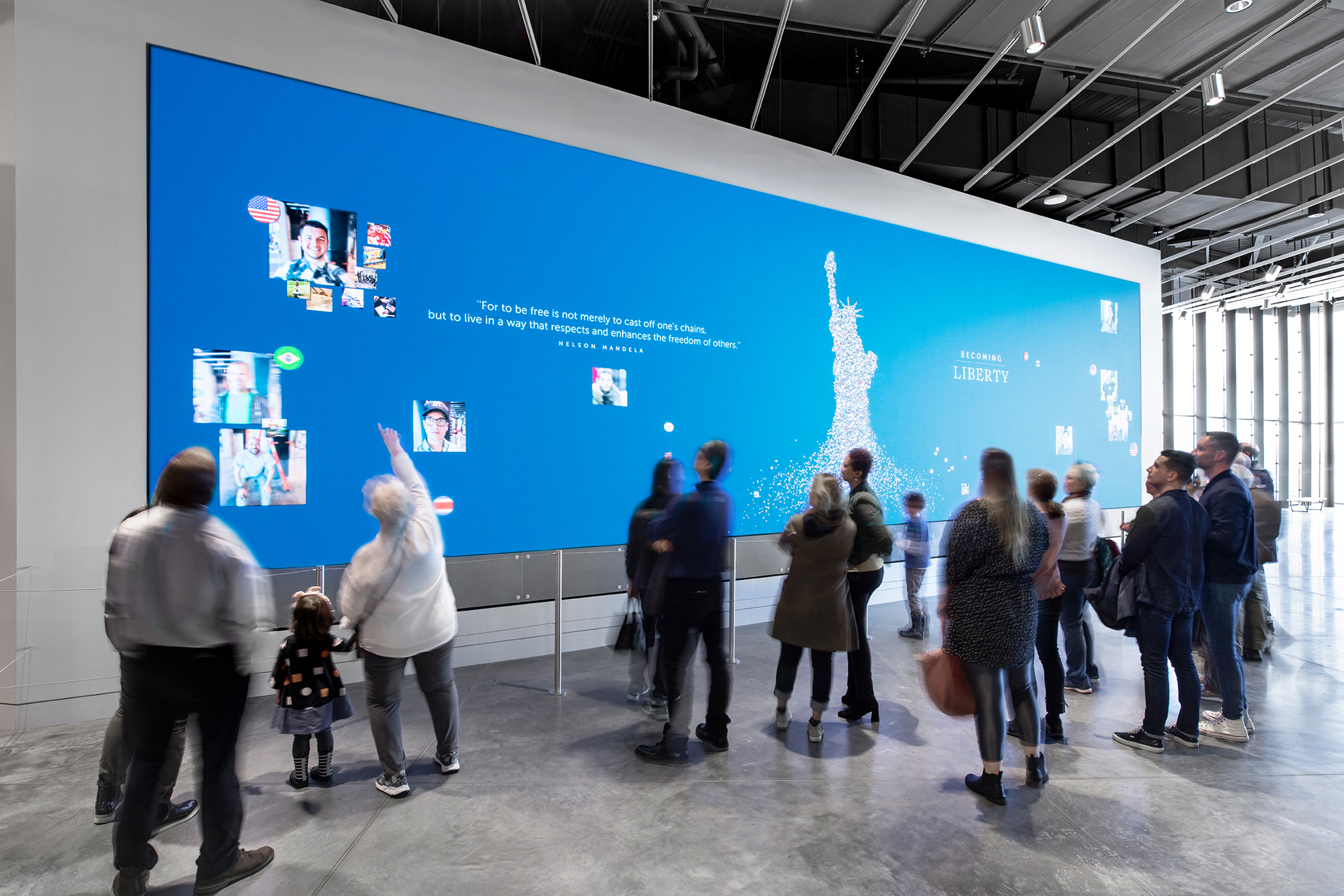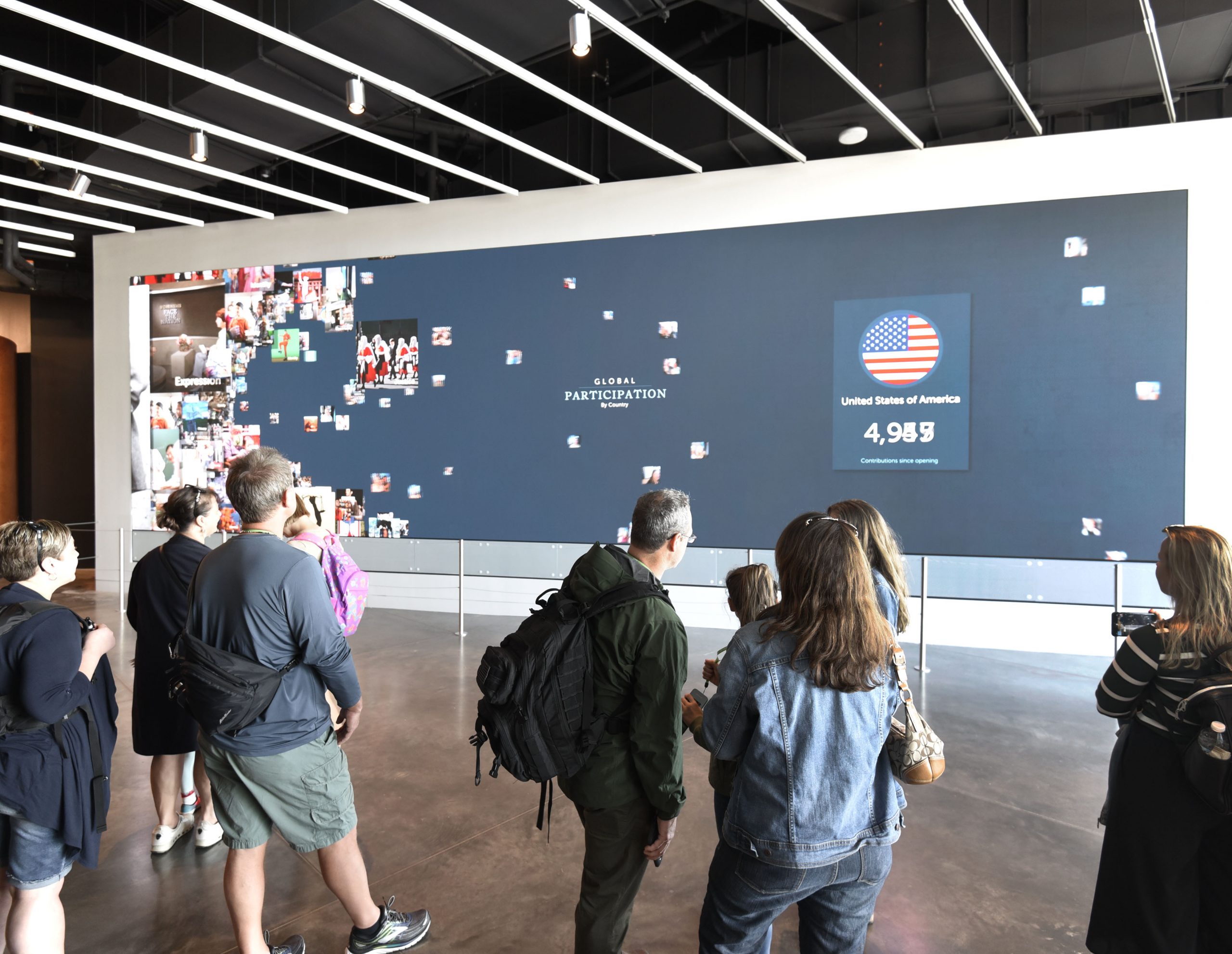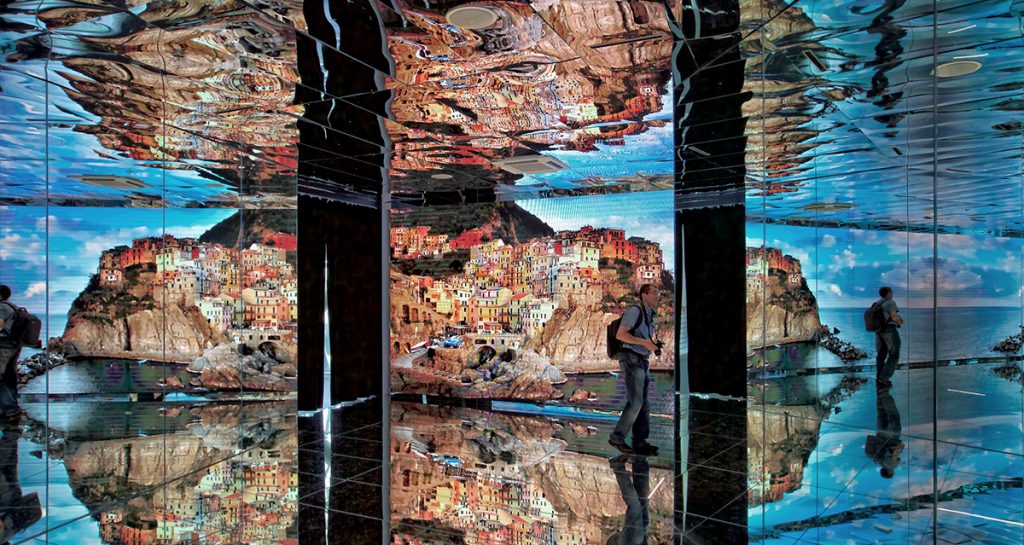Advertising spaces measuring hundreds of feet in diameter. Three-dimensional digital-art installations that tilt and curve. Displays that render as much detail in the midafternoon sun as they do in the dark of night.
The digital canvas is larger and more flexible than ever. It’s so imposing in scale, and so impressive in performance, that the traditional term for large-format (usually LED) displays—known as “spectaculars”—almost feels inadequate.
This is truly an age of almost unbounded possibilities in the use of visual technology not only to inform and educate but also to inspire, delight and wow. Increasingly, that which we can conceive we also can create. Yet, even as we continue to push the boundaries of what can be achieved, those tasked with funding, building and maintaining our digital dreamscapes remain subject to pesky constraints like budget, bandwidth and various other manifestations of the laws of physics.
Yes, we should dream big. But, at the same, we should plan carefully. And while we’re at it, we should work collaboratively, think holistically, create iteratively and budget realistically.
From Idea To Infrastructure To Experience
Creating spectacular displays demands so many resources—from financial to technical—and requires such a wide range of expertise that it can be difficult to know where to begin a project. As is the case with any large-scale endeavor, it’s best to start at the end. In this case, you can do that by asking, “What do I want my audience to remember from their interaction with the installation?”
Alex Simionescu, a Principal at FLOAT4, a Montréal, Québec, Canada-based experiential concepting and design firm, asks clients to answer that question in a single sentence. “I think it’s fundamental,” he said. “It really makes the difference between projects that stand out and ones that just look like a version of something else.”
Is the goal to educate? Is it to promote? Is it to create ambiance? All those goals are meaningfully different.

I spoke to my colleague James Fife, Consultant Extension, Global, at RP Visual Solutions, which creates custom-engineered steel structures for large videowalls, on this topic. “We like to start off at the very beginning of a project where things are more in a dream state,” he explained. A lot of the initial vetting involves determining what kind of technology is required to achieve the stated goal.
In many cases, clients will have preconceptions about the best technology choices. Perhaps, for example, the architect or a designer has taken the initiative and dictated an LED display of a certain size. Although client insights are essential to achieving a successful outcome, AV technology experts can ask the essential questions—and guide clients to the answers—that will enable their firms to produce visual masterpieces that are not only impactful but also workable.
Does the client want the screen to be a specific size? Does the client want a specific image-resolution level? If so, is the client prepared to shoulder the costs of creating the content that will require? Does the client have the necessary infrastructure to house and maintain it? Fife said that it’s important to remind clients to think about content, the infrastructure that will carry the content and the technology that will display the content.
Other potential client requests—for example, for the display to be interactive—can further complicate the design by introducing additional demands on the technology.
Where Do You Begin?
When you’re planning a large-format installation, what’s the best place to begin: the creative-content concepts or the technical systems? “It’s a hard question,” Simionescu acknowledged, and it’s one that’s answerable both ways. One may begin with content and create a technology solution that will deliver it. The risk with that, however, is potentially discovering that the cost to achieve your vision is prohibitively high. Conversely, you may start with what you believe is a cost-effective technology solution and resign yourself to creating content that it can accommodate. There’s danger with that approach, too. What if you commit to a lower-cost system that constrains your messaging to such an extent that the whole endeavor is a waste of money?
To avoid potentially negative consequences, clients should seek partners who understand both the content side and the technology side. “I can’t imagine you could just be a pure content shop without understanding the different display technologies and the carriage and all the implications of the solution,” Fife said. To have workable content, you need people who understand bandwidth, server requirements, software solutions, environmental factors and other elements.
The Process Will Be Iterative
Success requires a true team approach, including hardware and software creators, content creators, building architects and designers. “The bigger a project gets, the more stakeholders there are,” Simionescu said. “But, ultimately, it comes back to the basics of communication. Because even if everybody on the project speaks English, you’re still talking a lot of very different languages.”
Inevitably, one team’s insights and requirements will inform other teams’ challenges, and vice versa. Although prudent planning can minimize changes along the way, the sheer complexity of large-format spectaculars necessitates an iterative process. And it’s imperative that every iteration involve the principal parties: project management, the software team, the AV technical team and the creative-content creators. Simionescu calls these “the pillars.”
Every step of the way, you can expect clients to weigh in with questions and requests. “Whenever we say yes or no to a client, we want [the team member] to answer on all these fronts,” Simionescu said. For example, is a proposed change in keeping with the project scope? Does it match the vision creatively? Is it technically feasible?

Fife believes that it’s essential to involve not only the initial AV-design team but also the building architects and structural engineers. “The other team we need upfront is HVAC [heating, ventilation and air conditioning],” he continued. “Different technologies generate vastly different amounts of heat. When you’re adding 600,000BTU to your building, that’s a lot of hot air.” Indeed, changing from one technology to another might add $250,000 to the display cost, but it could save $1 million on HVAC.
On the topic of finances, Fife warned, “System budgeting is a big issue in spectaculars. Taking a little from one place can triple costs in another.” (Sometimes, it can result in savings on an equal scale.) Ultimately, clients will always be concerned about costs—both upfront and ongoing. But it’s important to look at the numbers realistically, not only to stay on budget but also to extend return on investment (ROI) for a longer period. This will minimize total cost of ownership (TCO).
If the AV team works closely with architects and structural engineers, the team members can often take advantage of foundational elements of a structure; for example, it can overlay the display and support technology on a load-bearing wall. The space can be planned out in such a way that it allows for successive generations of technology, without compromising the structural integrity or requiring new supports.
Master Your Messaging
Perhaps the least-considered aspect of a project’s budget is content. “There’s a lot of discussion around the technology being used, but I rarely see much discussion around the cost of content,” David Haynes, Founder and Editor of Sixteen:Nine, a digital-signage publication, said. “More than anything else is the ongoing costs of ‘feeding the beast,’ or populating your big, splashy videowall project with fresh content.”
Content costs vary widely, depending on the method of producing it, the way it will be displayed and the length of time it will be in use. For example, a real-time newsfeed is a negligible expense as compared to elaborately modeled 3D content that transports audiences to a different world. Are you creating content that invites prolonged viewing…content in which change is constant and mesmerizing? Or are you creating a more static canvas, which becomes part of the ambiance? Elaborate instructional, narrative or highly thematic content for, say, a museum, entails considerable production costs, and it might have to be refreshed frequently.
For Simionescu, it comes back to the question he asks at the outset: What do you want people to remember? Do you want to impart a feeling that comes from an experience in which you don’t really understand what you’re looking at, but you’re engaged emotionally? Alternatively, do you want to convey specific information?
As mentioned earlier, decisions made in one regard reverberate in every other facet of the project. Does the content or venue demand ultra-high-resolution microLED technology? Is the setting such that fine gradations of resolution will be lost on the audience, given the nature of the content or the average distance from which it will be viewed?
“As much as people look at projection as [being] akin to a steam-powered car from the early 1900s, it’s exceptionally efficient for the amount of area it covers,” Fife observed. Projection is not applicable to every situation, but, in some cases, it can confer considerable cost advantages.
Unleash Imagination; Contain Budget
If there is any lesson for clients to keep in mind when it comes to ambitious undertakings like this, the first and most important is not to self-limit. Today’s technology, designed and built by talented professionals, can create visual tableaux that would have been impossible to conceive not so many years ago. The key is for clients to partner with the right people who, themselves, have the right partners to take things from the beginning dream state to an actual installation that brings the client’s vision to life in stunning brightness, detail and movement.
So, yes, dream big. But act methodically, too. “Creativity is definitely about process,” Simionescu said. When performed carefully, iteratively and professionally, it can yield wonders.
To read more from Sound & Communications, click here.
